James Bartlett Hammond held strong beliefs in charity and helping otheres, and a fine example of this is the Hammond typewriter for the blind.
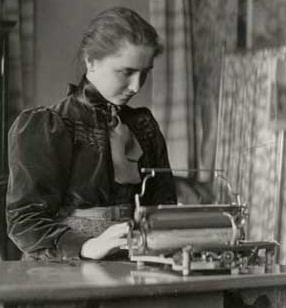
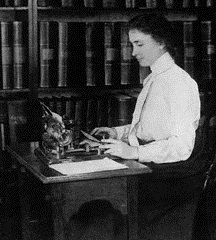
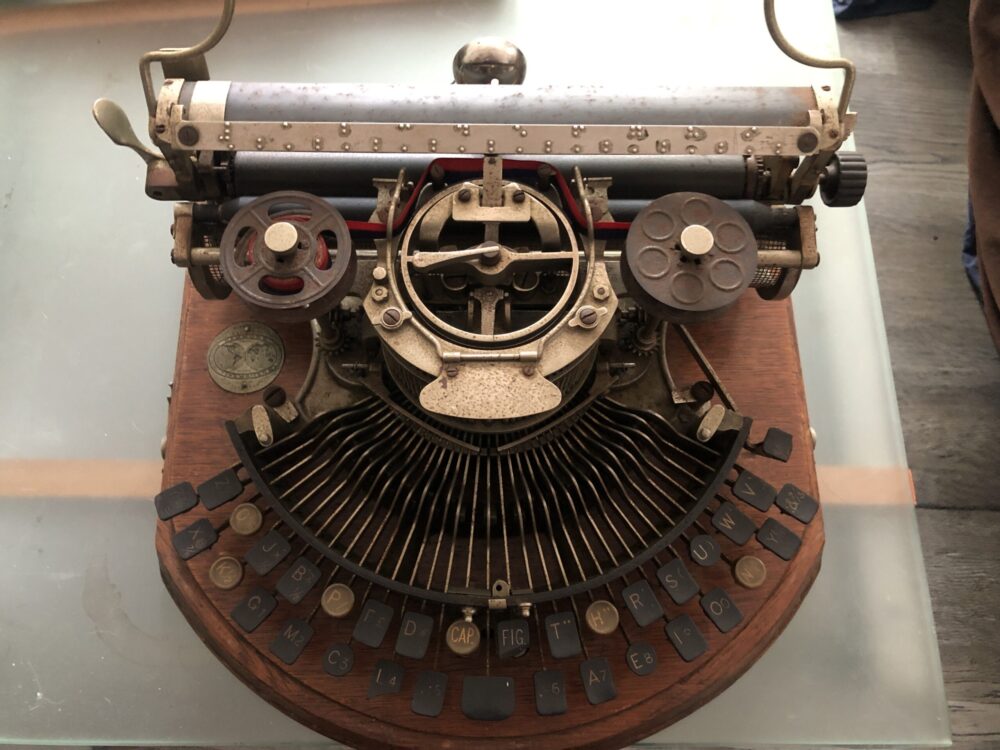
It’s uncertain when the idea came about for a typewriter for the sight impaired, but early evidence dates as far back as 1896. Thanks to the Perkins School for the Blind and their generous archives, we know that James struck up a friendship with Francis Joseph Campbell, founder of the Royal National College for the Blind.
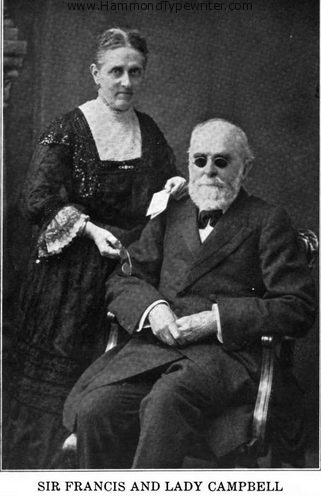
Each year, the company provided special Hammond’s for silent auctions, Christmas gifts, and in particular, at a reduced price but often free, to those who needed them. These photos, courtesy of the Perkins School for the Blind, give us a glimpse into this machine’s use.
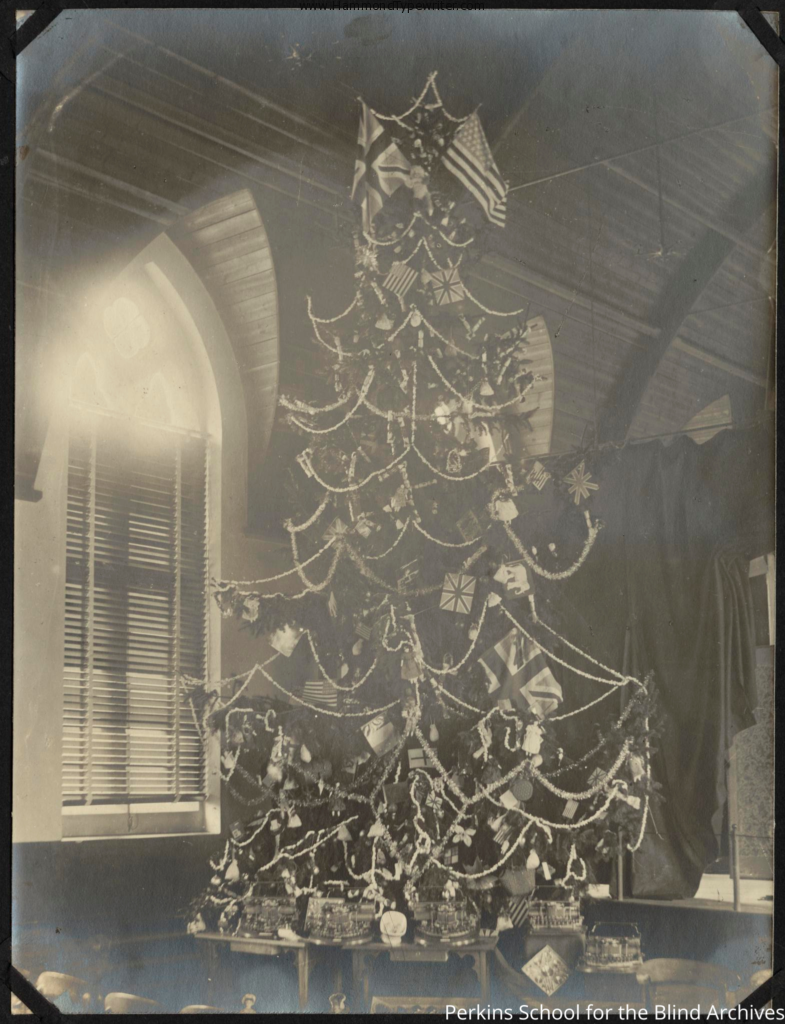
The Christmas tree is from the Royal National College for the Blind in Hereford, England. While there is no date on this photo, there are clues in the machines gathered around its base.
First, notice at the top the two flags, British and American. This was to celebrate the friendship between the College and one of it’s many American benefactors, but also may have been due to James’ visit to the College; we know he went to England often, and for certain in 1905.
If we look closely at the machines around the base of the tree, we can just make out the white, raised landings for the fingers. These helped tell the sight impaired operator where to place their fingers on the keyboard. So we know by just the appearance of these specialized machines that this must have something to do with the sight impaired community. Since it’s got a British flag we can say with some certainty that this is at RNCB.
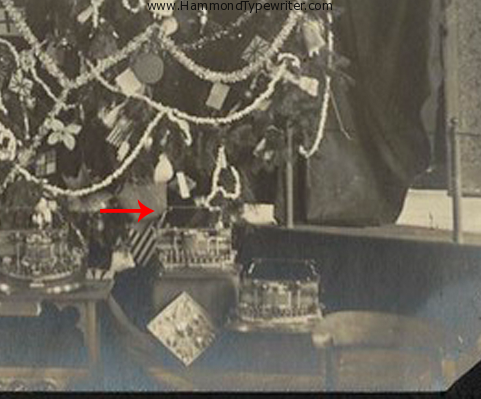
Looking closely at the machines we see the paper rest is the three-piece variety, which ended production with the Number 2 around 1906. Therefore we know this photo was taken before 1906, but likely after 1900.
Something else worth noting is that on each machine, between the roller and the anvil locking mechanism, is a silver metal indicator protruding up, towards a braille labeled eraser bar. Written on the eraser bars are numbers to help the operator align their margins and type.
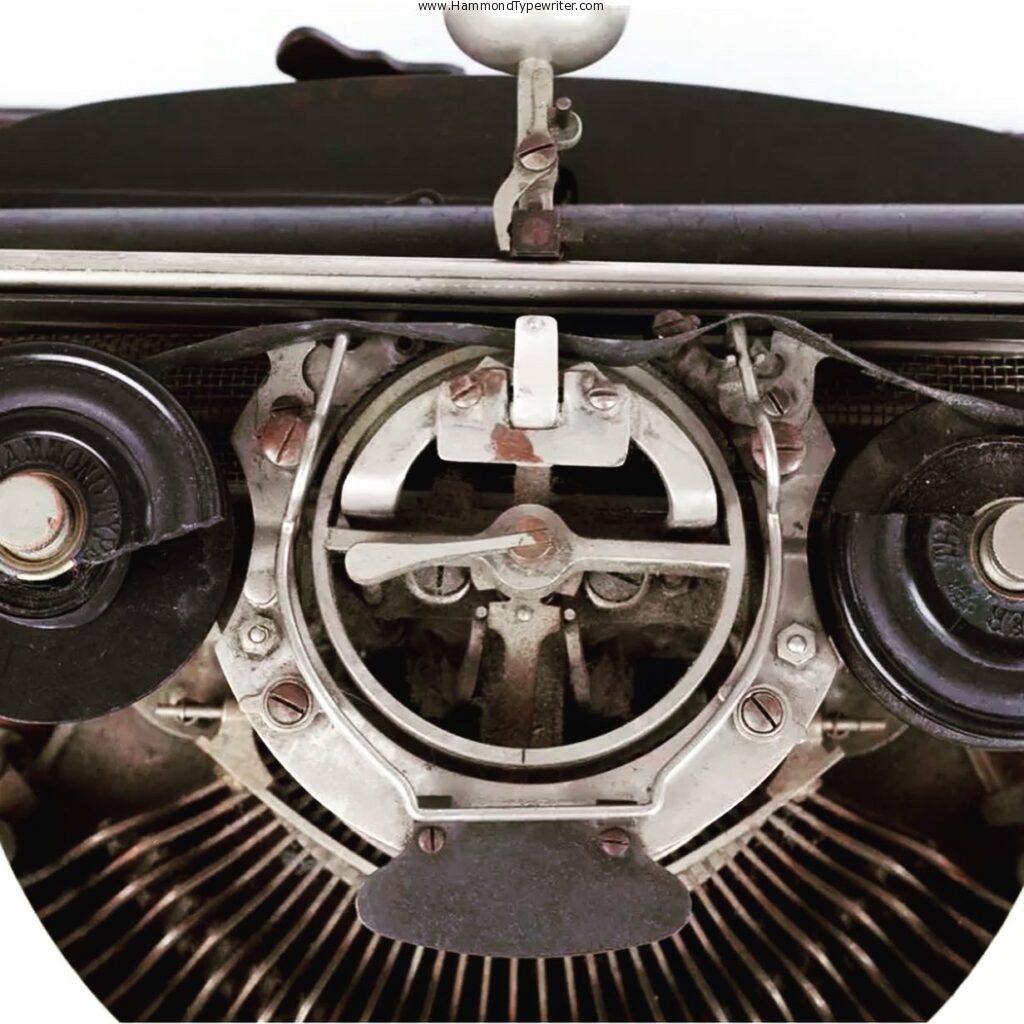
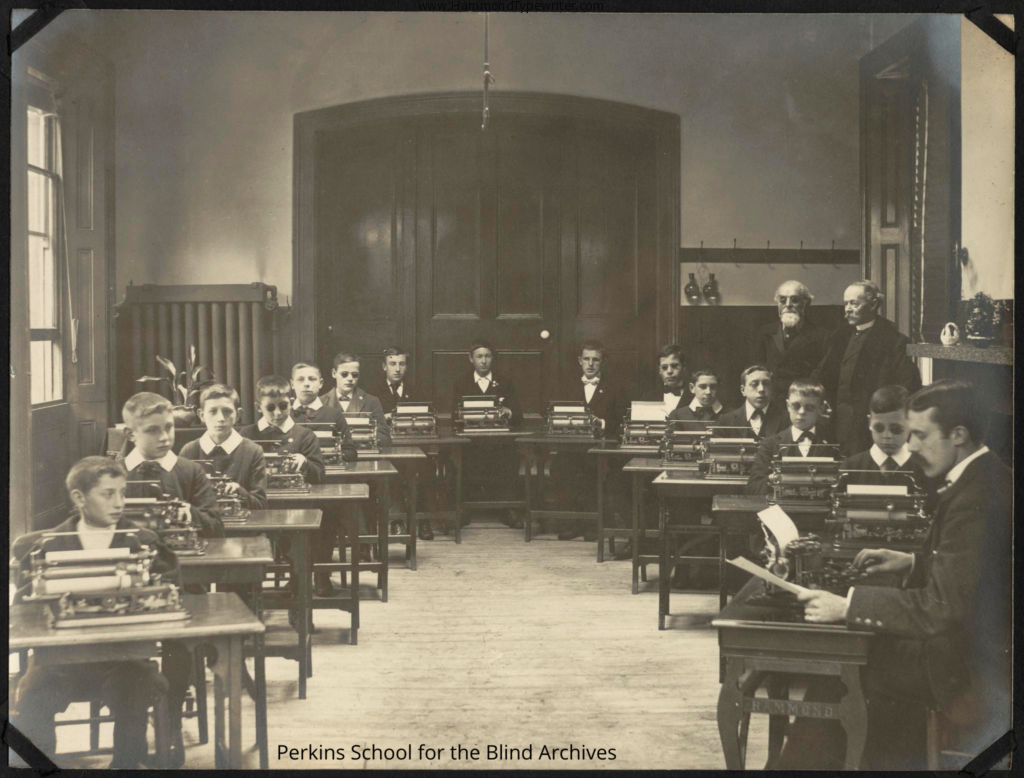
The Christmas tree also fits within a timeline of other photos, such as these photos from classes for boys, and girls. In both, Francis Joseph Campbell and Hammond watch on. These machines are also Number 2’s by the shape of the paper rest. It’s quite possible the photos were taken together when Mr. Hammond visited England.
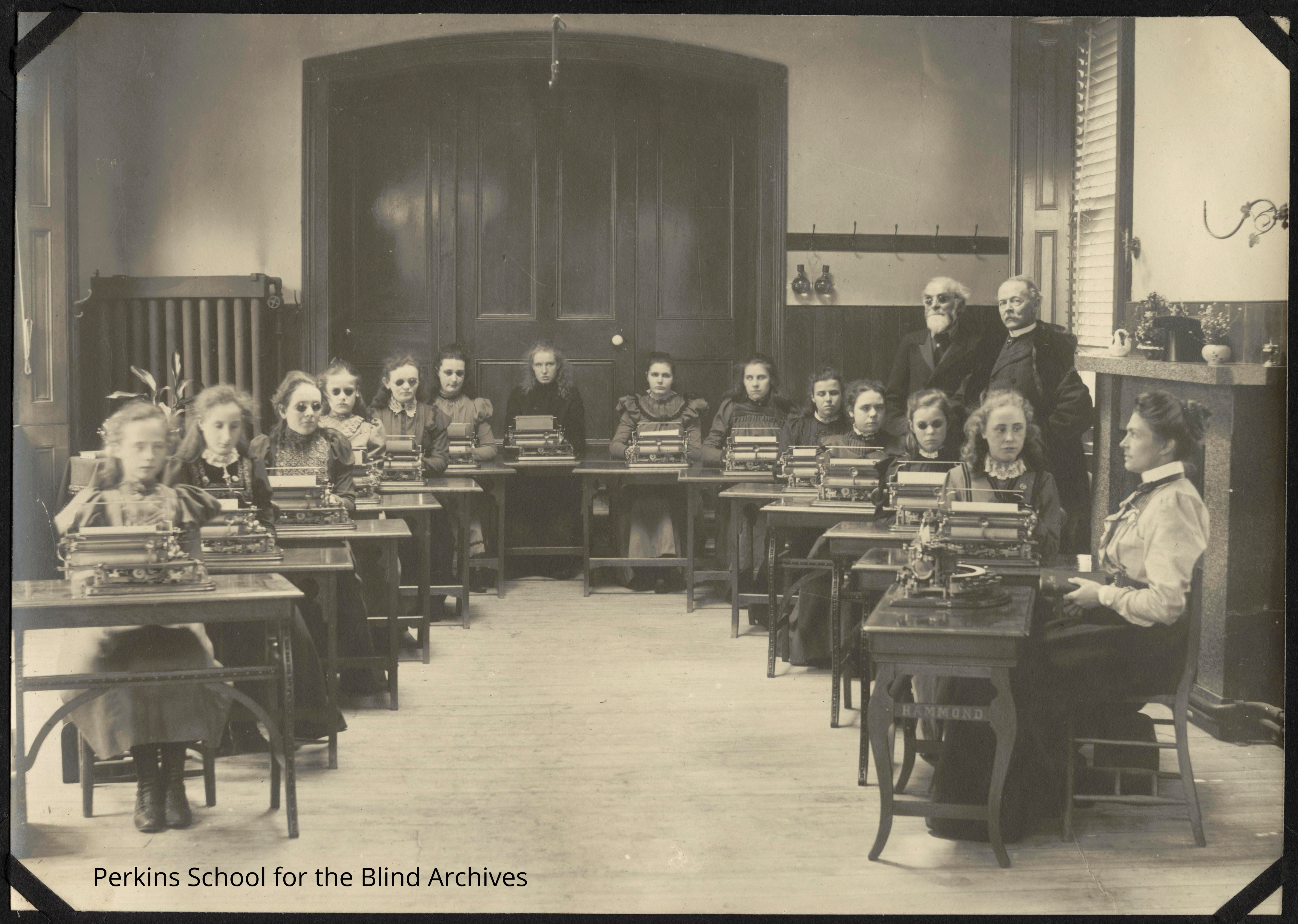
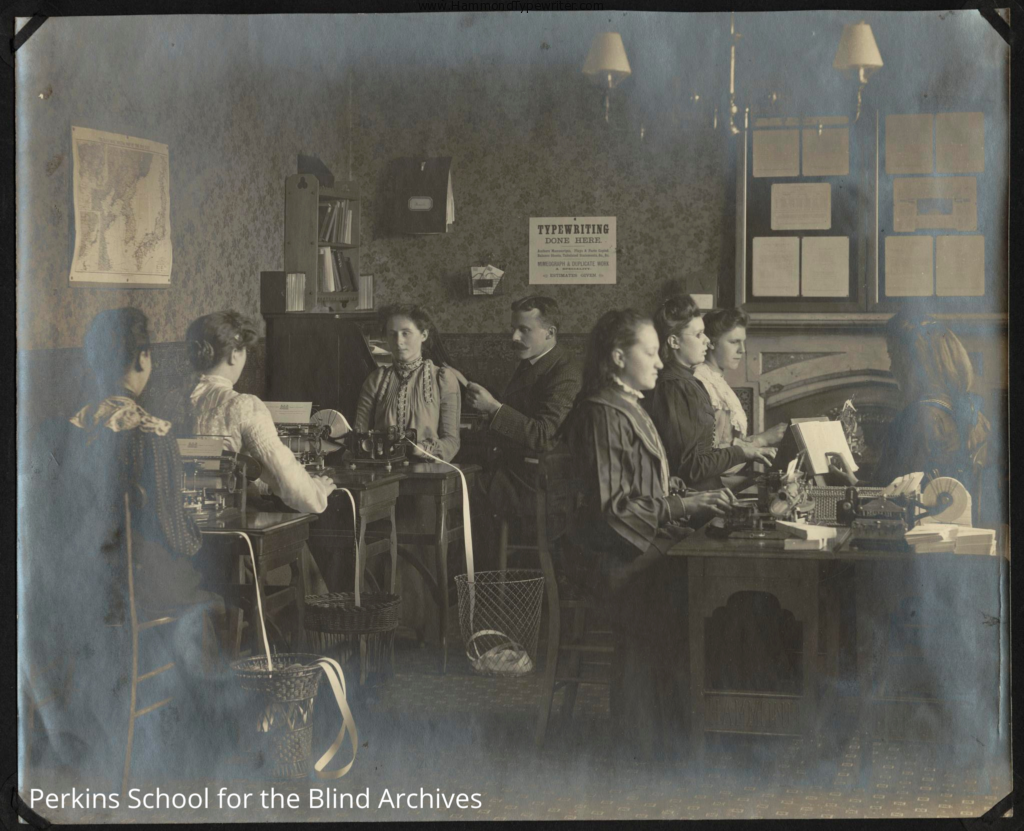
The Royal National College for the Blind also used Hammond’s in their business office.

Operation
This unique machine employed a genius method of providing a machine that served both the sighted and those with limited sight. As with any other Hammond, this machine is operated using a shuttle. This particular shuttle utilizes a series of raised dots, like pegs. Alas we do not have a photo of an actual braille shuttle, but we do know it’s impression layout from a shuttle catalog.
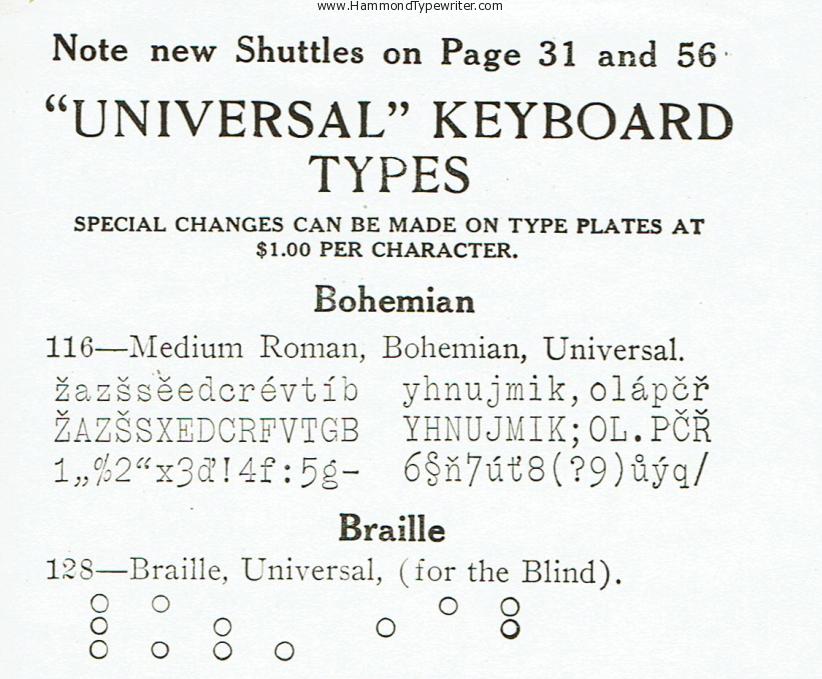
Along with a special adapter for the hammer, it creates raised indentions on the paper on the back. The ingenuity comes in when you realize the machine is operated by typing right-to-left. Such that when the paper is removed and turned over, it has braille printed left to right!